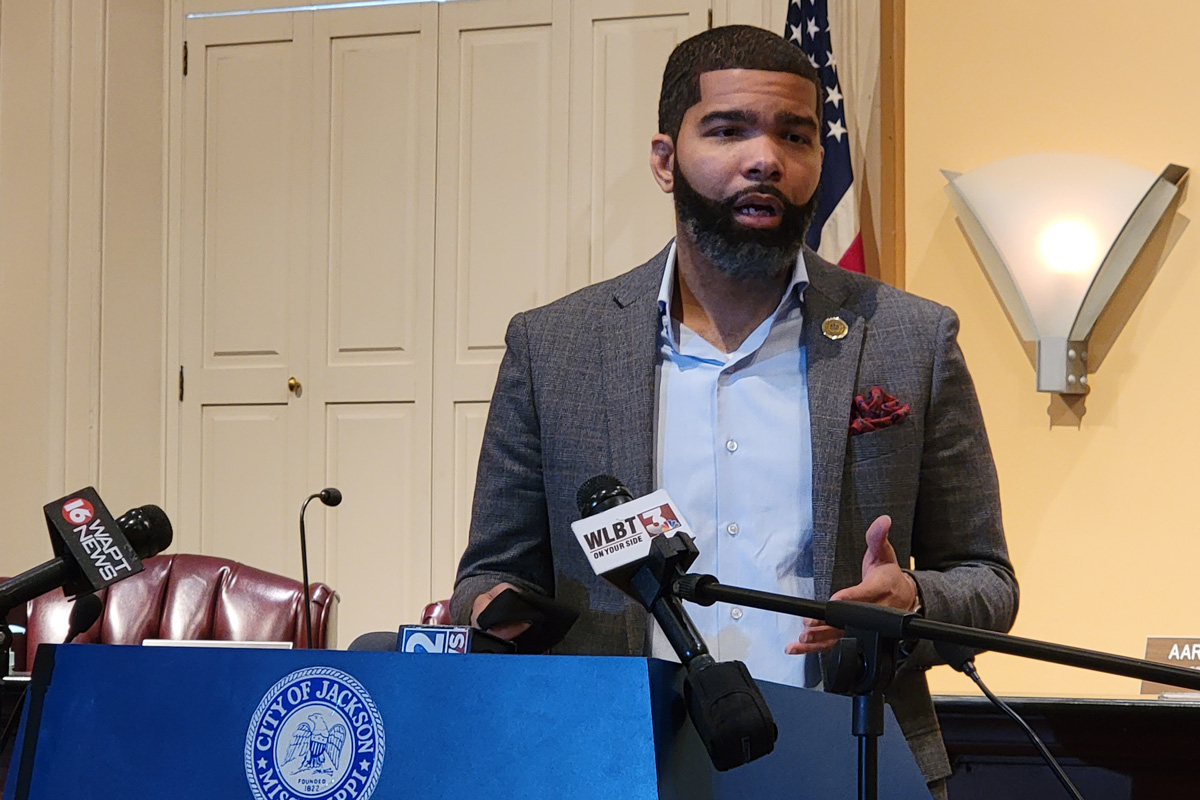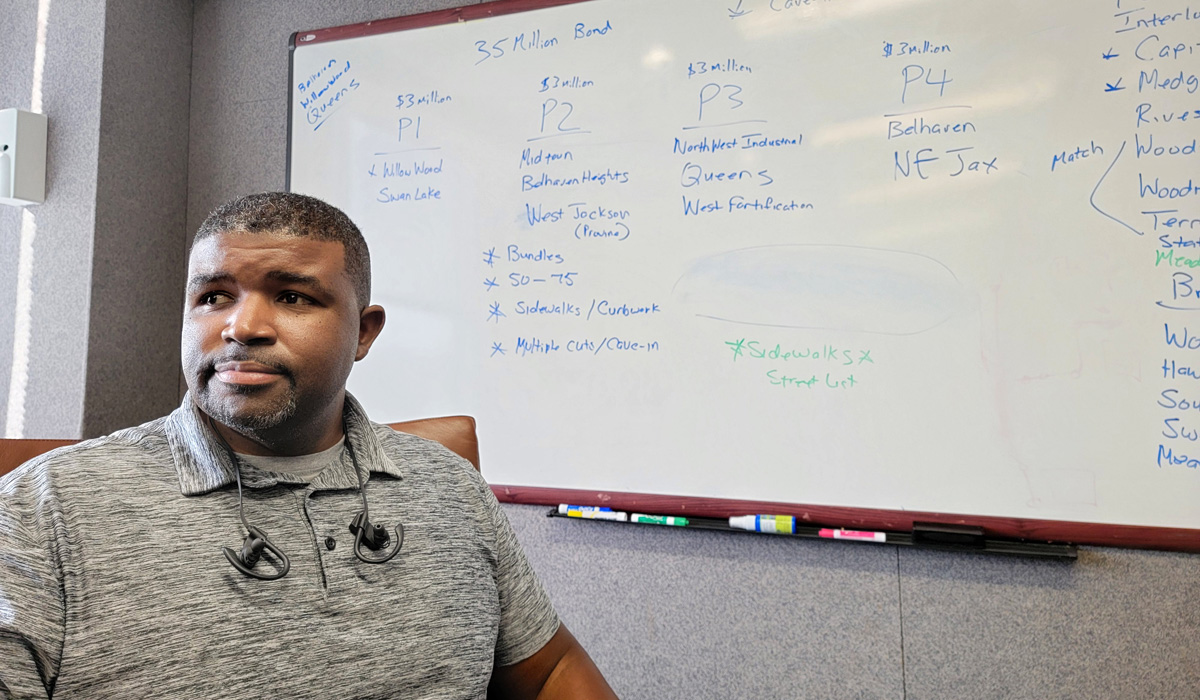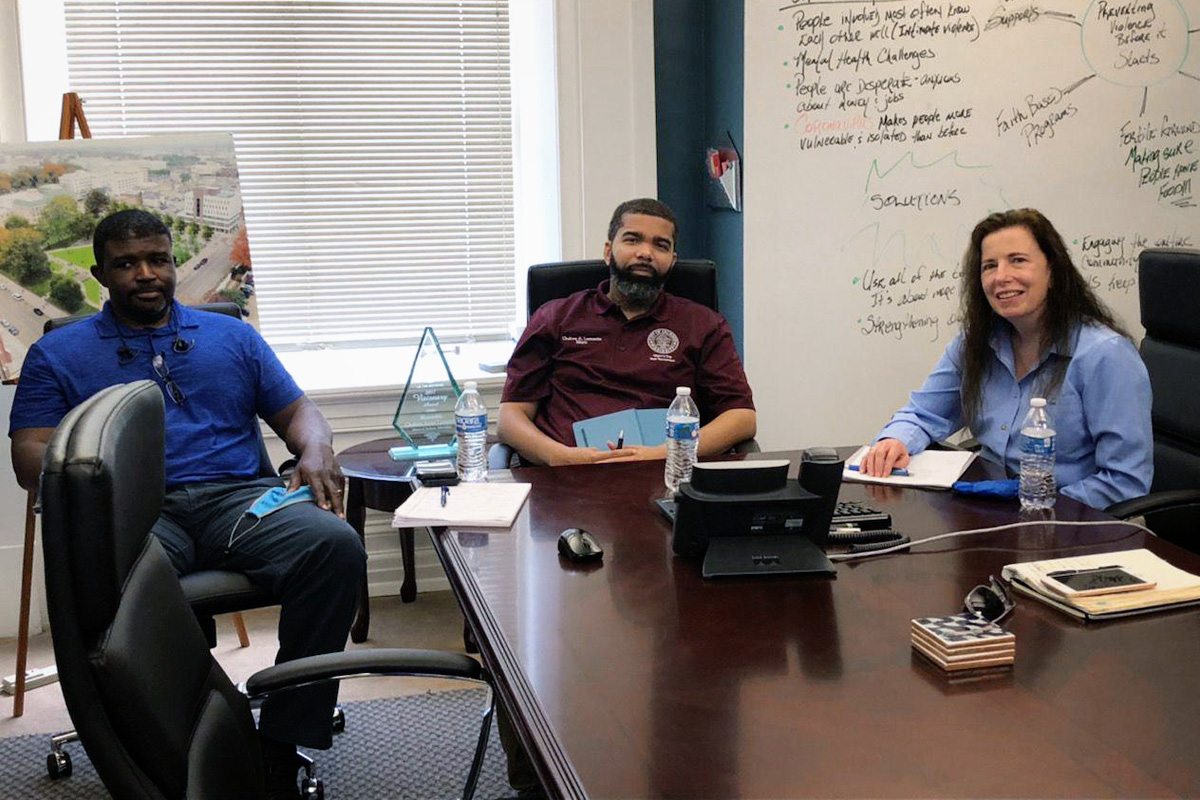Regulators and public-works officials agree that Jackson’s water-treatment facilities have completed key improvements ahead of a looming Environmental Protection Agency deadline, but much work remains to bring the capital city’s system into compliance with public health regulations.
The Environmental Protection Agency completed its tour of O.B. Curtis and J.H. Fewell, Jackson’s water-treatment plants, on July 22, 2021, part of a new Administrative Order of Consent (AOC) binding the city to devise and complete actionable improvement plans on a strict timetable.
The day of the tour, the Mississippi Free Press interviewed Jackson Mayor Chokwe A. Lumumba, Jackson’s Public Works Department Director Dr. Charles Williams, and Director of Enforcement and Compliance for EPA Region Four Carol Kemker. Williams highlighted the progress already made to address EPA’s most acute concerns.
“We have provided documentation to the EPA on certain projects that we have completed. … We’ve completed a soda ash project at O.B. Curtis: that’s going to help with corrosion control. The sluice gates, microscreens, all dealing with raw water that’s coming into the plant, those projects have been completed,” Williams explained in the interview.
Kemker agreed with Williams’ assessment. “The tour gave us a solid, on-the-ground look at the progress that has been made on the AOC … the city has made operational changes that have improved the operations of the drinking-water systems.”
“One of the things that we saw today is that the city has fixed the microscreen train,” Kemker said. “This helps reduce turbidity, or sediment coming into the plant. And that’s a big step for us: an early upstream addressing of (the issue).”
A consistent and enduring reduction in turbidity—the cloudiness of the water, with all of the potential pollutants that can entail—is EPA’s primary concern at O.B. Curtis and J.H. Fewell, Kemker said.
“The issues we had the most acute concern about had been that turbidity and the possibility for bacterial exposure,” Kemker said. “Jackson has taken some immediate steps to help address those turbidity issues that were certainly of great concern for us.”
Lead and Corrosion Control
The corrosion-control projects that Williams mentioned are key to another of EPA’s most immediate concerns: lead contamination. Unacceptably high levels of lead in drinking water emerge from two potential causes: lead distribution lines in the city’s pipe network or lead piping and fixtures in homes and businesses.
Lead poisoning is a grave concern to public health. Lead accumulates in the body from a variety of sources, through contaminated water, paints, dust, soil or food. Lead is a particularly severe threat to pregnant women and infants. In pregnant women, lead exposure can result in stunted fetal development. Lead-tainted water is especially dangerous to infants, as it can arrest growth and development, and infants who rely on formula are at the greatest risk. The EPA estimates that infants on mixed formula receive two to three times more lead exposure from water compared to other individuals.
It is the City of Jackson’s responsibility to ensure that all lead distribution lines in its network have been removed and replaced. But it believes that it accomplished this project three decades ago.
“In 1992, (Jackson) was required to do what we call a materials evaluation, a survey of their distribution line. And at that time they did that materials evaluation. And they did not find any lead or copper distribution lines,” Kemker said in a later interview. But the EPA is seeking renewed certainty that no lead pipes remain in the system, she added. “The City agreed to refresh their materials evaluation of the distribution system.”
If any lines made of unsuitable metals are found in that survey, the City must move quickly to remove them.
If no lead distribution lines remain in the city’s system, how could the capital city have exceeded the lead action level in 2015 and 2016? The answer is corrosion control. Outdated lead pipes and fixtures at the point of delivery—in homes and businesses—can leach lead into drinking water, especially if the necessary corrosion control is not completed. This is the importance of the soda ash project that Williams mentioned.
“This is why we’re so very adamant about corrosion-control treatment. And I believe the City has taken it quite seriously as well, because when the corrosion-control protection is not done properly, the piping or the solder in people’s homes or offices can react with different pH levels … and it can leak into the water,” Kemker said.
The City of Jackson may be taking corrosion control seriously now, but it is badly behind on bringing its corrosion-control mechanisms in line with regulations. Since the 2015 and 2016 lead exceedances, EPA identified 1,476 days during which the city failed to comply with “proper treatment technique requirements.”
Operational Changes Ahead
For three distinct periods in 2016 and 2017, the City additionally failed to report those procedural violations in corrosion control. Jackson’s unwillingness—or inability—to properly inform the relevant authorities and the public have been an enduring concern as local water-treatment plants have eroded.
Kemker asserted that the City has been more responsive and forthcoming with recent violations, departing from a pattern of missed violations and reporting failures. “For me, that helps provide confidence that the city is telling me what’s happening before I find it,” she said. “Being aware of the operating parameters of their system gives me greater confidence that they will meet the notification requirements.”

Mayor Lumumba expressed a commitment to transparency through the partnership with EPA. “I would imagine that most times when EPA is calling any city, it’s not celebrated—people try to shy away from that, maybe duck their heads in the sand. I actually want to embrace the relationship with EPA. Because I think that it works to our benefit,” he said.
But Lumumba will need to make good on promises to expand the Department of Public Works’ transparency in his second term. The EPA partnership does, ultimately, provide the opportunity for greater public awareness of the progress Jackson is making, as its success or failure to meet the deliverables that the EPA requires on the timeline the agency establishes will be a matter of public record.
Some of those deadlines are fast approaching. By Aug. 1, the City of Jackson must provide the EPA with the materials evaluation plan—how it intends to confirm the absence of lead distribution lines—and a staffing plan.
Every Piece A Gear
All parties acknowledge that staffing is one of the great underlying causes of many of O.B. Curtis and J.H. Fewell’s extensive regulatory failures. A comprehensive staffing plan will demand more than simply hiring qualified personnel. It must take into consideration the need to retain employees, in order to cultivate talent and familiarity with the capital city’s systems.
The simplest solution is, unsurprisingly, to increase employee pay. Williams told the Mississippi Free Press in May that he intended to submit a plan to increase employee pay by 20%, across the board, a significant raise intended to make employment at Jackson’s water-treatment facilities a more attractive lure to new graduates with the requisite skills.
But that plan is one approach among many. EPA’s role in funding concerns is heavily limited, itself one of the underlying causes of water system collapse in legacy cities like Jackson. But Williams says the EPA is helping in staffing management. “We’ve been getting some assistance from a circuit rider program through the EPA,” he said. That is a system by which itinerant water systems experts help revamp the management of programs and facilities in need to better meet Safe Drinking Water Act regulations.

The mayor declined to commit to the raises Williams proposed, without discounting them entirely. For Lumumba, the question is tied up in much broader concerns about the City’s ability to fund its water systems at all. In the years since the EPA has pulled away from directly paying into Jackson coffers for water improvements, the federal government has expected cities themselves to make up the shortfall through rate increases and other forms of local revenue generation.
Lumumba acknowledged this reality, but also the continuing struggles with the water-billing system, negating the value of rate increases for lack of a consistent way to collect them.
“I do believe that at some point we have to get to the discussion of rate adjustments within the city. I have to be honest with our residents: I can’t state that it’s not a consideration that we have to make. (But) the first priority has to be, before we look at adjusting rates … is collecting the rates that we do have,” Lumumba said.
In total, EPA’s assessment of Jackson’s progress toward a functioning water system was cautiously optimistic. Kemker added that the City of Jackson’s responsibilities were carefully laid out in the Administrative Order of Consent and not subject to constant revision. “We’re working under the AOC. We’re not adding stuff as we go,” she said.
In the joint interview, Kemker stressed the interconnectivity of all of Jackson’s systems. Every piece—treatment, distribution, billing, staffing—are vital gears in a larger machine.
“Work on the financial end, the enterprise portion, as well as the physical plants … if that work isn’t done, long-term (struggles) become tomorrow’s acute problems,” Kemker said. “You could have a winter storm, or anything else. When you have a system that needs this type of progressive work to rehabilitate it … you can’t predict the future.”
Read the MFP’s full coverage of Jackson’s water and sewer challenges.






